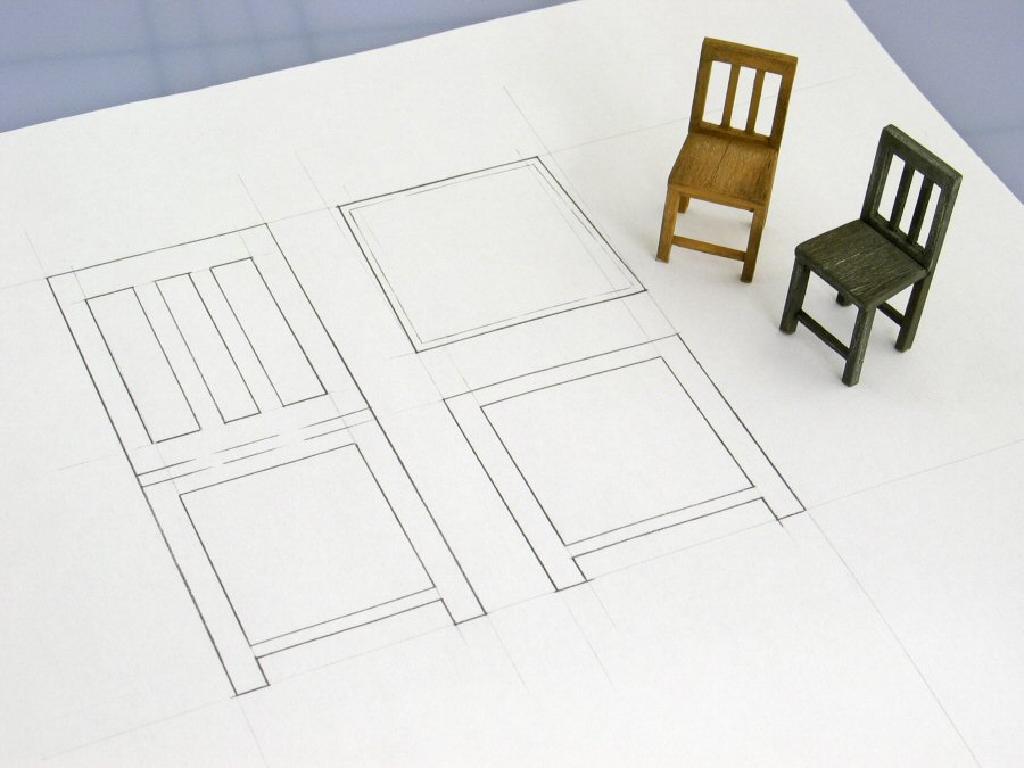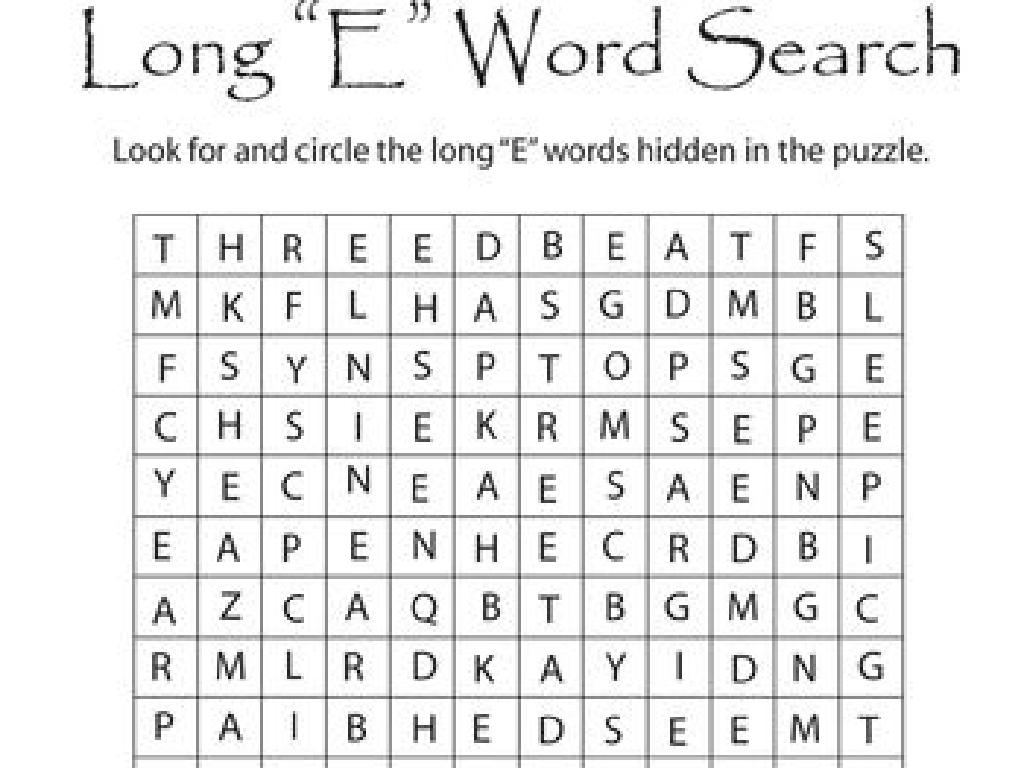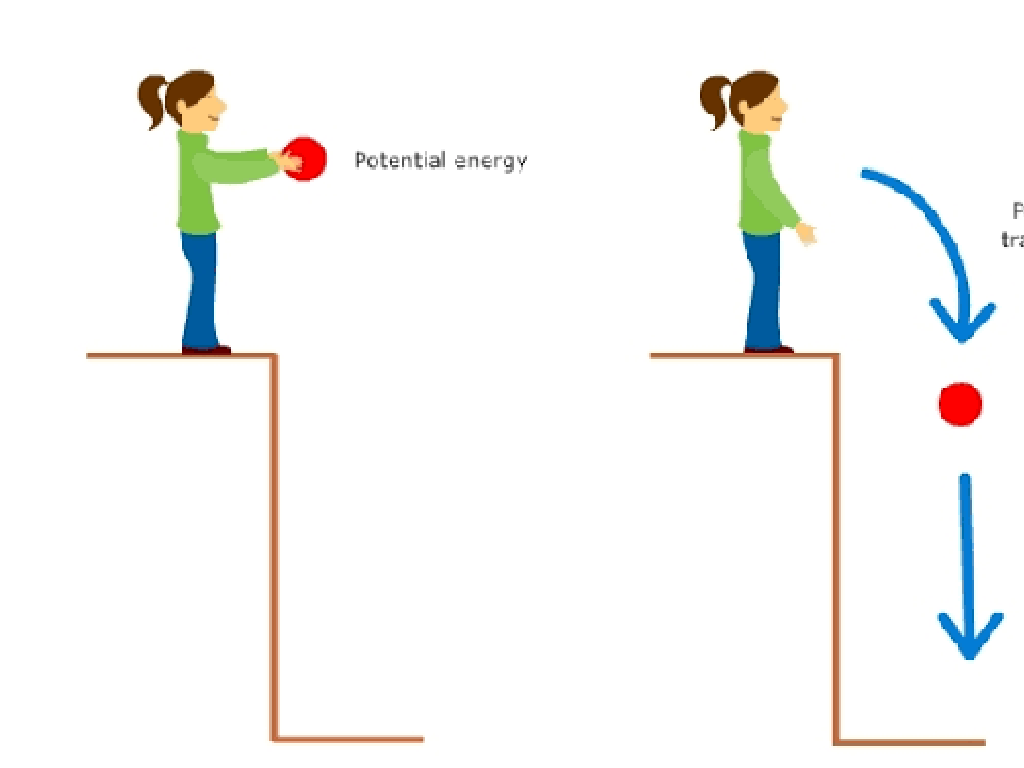Use Models To Subtract From Three-Digit Numbers - Without Regrouping
Subject: Math
Grade: Second grade
Topic: Subtraction Strategies: Three Digits
Please LOG IN to download the presentation. Access is available to registered users only.
View More Content
Welcome to Subtraction!
– Learn to subtract big numbers
– Subtract three-digit numbers
– Like 456 – 123, without borrowing from the next column
– No regrouping needed
– Subtraction finds the difference
– How many are left or how much less is one number from another
|
This slide introduces second-grade students to the concept of subtracting three-digit numbers without the need for regrouping. Start by explaining that subtraction is a way to find out how many items are left or the difference between two numbers. Use simple and relatable examples to show how subtraction works in everyday life. Demonstrate on the board how to subtract three-digit numbers step by step, ensuring that students understand that regrouping (or borrowing) is not required for this exercise. Encourage students to practice with several examples and provide immediate feedback. This foundational skill will help them with more complex math problems in the future.
Understanding Subtraction
– Subtraction means taking away
– Like 5 apples minus 2 apples leaves 3 apples
– Subtraction in daily life
– Spending $3 from $5, or eating 2 cookies out of 5
– Let’s solve subtraction examples
– Subtract 123 – 111 and find the answer together
– No regrouping needed
|
This slide introduces the concept of subtraction to second graders by explaining it as the process of taking one number away from another. Use relatable examples such as spending money or eating cookies to illustrate subtraction in everyday life. Walk through a few simple subtraction problems as a class, emphasizing that we are subtracting without regrouping, which means each digit can be subtracted separately. Encourage students to visualize the process using physical objects or drawings to aid their understanding. The goal is to make them comfortable with basic subtraction before moving on to more complex problems.
Understanding Three-Digit Numbers
– Hundreds, tens, and ones places
– Break down the number 345
– 345 is made up of 3 parts: 300, 40, and 5
– Count 3 hundreds in 345
– 3 hundreds equals 300
– Count 4 tens and 5 ones in 345
– 4 tens equals 40, and 5 ones equals 5
|
This slide is aimed at helping second-grade students understand the composition of three-digit numbers, which is crucial for performing subtraction without regrouping. Start by explaining the value of each place hundreds, tens, and ones. Use the number 345 as an example to show how it breaks down into 300 (3 hundreds), 40 (4 tens), and 5 (5 ones). Use physical manipulatives like blocks or drawings to visually represent the hundreds, tens, and ones. This concrete representation will help students grasp the concept of place value, which is essential for understanding subtraction of three-digit numbers without regrouping.
Models for Subtraction: Using Blocks
– Use blocks to subtract numbers
– Blocks or drawings visually show subtraction
– Each block represents a value
– 100s, 10s, and 1s blocks help us understand
– Practice subtraction with blocks
– Let’s subtract 342 – 153 using blocks
– No regrouping needed
|
This slide introduces students to the concept of using physical models, such as blocks, to understand subtraction without regrouping. Each block represents a different place value (hundreds, tens, ones), which helps students visualize the subtraction process. For the activity, demonstrate how to set up the blocks for each number and then remove the necessary blocks to find the answer. Ensure that the examples chosen do not require regrouping. Encourage students to try this method with different numbers and to explain their process. This hands-on approach solidifies their understanding of subtraction and place value.
Subtracting Without Regrouping
– Understand direct subtraction
– No borrowing needed here
– Subtract each place value
– Look at the numbers in each column, subtract the smaller from the bigger
– Example: 432 – 215
– Start from the right, 2-5 can’t do, move to the next, 3-1 do, then 4-2 do
|
This slide introduces the concept of subtracting multi-digit numbers without the need for regrouping. Regrouping is not necessary when the top number in each column is larger than the bottom number. Encourage students to check each place value starting from the right (ones place) and moving left. If they can subtract the bottom number from the top number in each column without needing to borrow, they can subtract directly. Use the example 432 – 215 to illustrate this: subtract 5 from 12 in the ones place (after borrowing from the tens place), 1 from 3 in the tens place, and 2 from 4 in the hundreds place. The answer is 217. Provide several examples and practice problems to ensure students are comfortable with this concept before moving on to subtraction with regrouping.
Let’s Practice Together: Subtraction Without Regrouping
– Step-by-step subtraction problem
– Match places when subtracting
– Ones from ones, tens from tens, hundreds from hundreds
– Example: 523 – 314
– Subtract 4 from 3? Oops, can’t do that without regrouping! Let’s try another example.
– Solve it together now!
– We’ll do each step as a class, and I’ll help you!
|
This slide is designed for an interactive class activity to practice subtraction without regrouping. Start by presenting a subtraction problem such as 523 – 314. However, this example requires regrouping, so use it to show what not to do and then provide a correct example. Remind students to subtract each place value separately and ensure they understand that regrouping is not needed for this exercise. Walk through the problem step by step, asking students to participate by solving each place value. For the hundreds place: 5 – 3, for the tens place: 2 – 1, and for the ones place: 3 – 4, which is not possible without regrouping, so choose an example like 523 – 213 instead. Encourage students to try their own problems and be ready to assist anyone struggling with the concept.
Activity Time: Subtracting with Models
– Try subtracting using blocks or drawings
– I’ll give you numbers to subtract
– Work with a partner
– Pair up with a classmate for this activity
– Help each other understand
– If your partner is stuck, try to explain how you got the answer
|
This slide introduces an interactive class activity where students will practice subtracting three-digit numbers without regrouping by using physical blocks or drawing models. Distribute blocks or have drawing materials ready for students to use. Provide a set of subtraction problems for them to solve. Encourage collaboration by having students work in pairs, fostering a supportive learning environment where they can assist each other. Observe the pairs to ensure they are using the models correctly and offer guidance as needed. Possible activities: 1) Subtracting using different colored blocks to represent hundreds, tens, and ones. 2) Drawing base-ten blocks to visualize subtraction. 3) Creating a ‘subtraction story’ with their partner using the numbers given. 4) Swapping subtraction problems with another pair to solve. 5) Discussing the strategies used with their partner to find the solution.
Class Activity: Subtraction Scavenger Hunt
– Let’s go on a scavenger hunt!
– Find and count classroom objects
– Subtract using your models
– Use blocks or drawings to subtract
– Share your findings with the class
|
This interactive activity is designed to help second graders practice subtraction without regrouping in a fun and engaging way. Set up various stations with different quantities of objects around the classroom. Students should move from station to station, count the objects, and then use subtraction models such as base-ten blocks or drawings to subtract smaller numbers from three-digit numbers. Encourage them to work in pairs or small groups to foster teamwork. At the end of the activity, each group will present their findings, explaining the subtraction process they used. Possible variations of the activity could include subtracting the number of chairs from the number of books, or the number of pencils from the number of crayons, ensuring that regrouping is not required for the calculations.
Review: Subtracting Three-Digit Numbers
– Recap on subtracting three digits
– Example of subtraction without regrouping
– E.g., 532 – 214. Subtract ones, tens, and hundreds
– Discuss any tricky parts
– Share if a part of today’s lesson was difficult
– Open floor for questions
|
This slide aims to consolidate the day’s learning on subtracting three-digit numbers without regrouping. Start by asking students to summarize the lesson to reinforce their understanding. Then, invite a volunteer to demonstrate an example on the board, such as 532 – 214, ensuring they explain each step: subtracting the ones place, then the tens, and finally the hundreds, all without needing to regroup. Encourage students to discuss any parts of the lesson they found challenging, and provide additional explanations where needed. Finally, open the floor for any questions, offering clarification and encouraging curiosity. This interactive review will help solidify the concept and prepare students for further practice.
Great Job on Subtraction!
– Amazing work with three-digit subtraction
– Practice at home using blocks or drawings
– Use your blocks to represent hundreds, tens, and ones
– No regrouping needed this time
– Next lesson: Subtraction with regrouping
– We’ll learn to borrow from the next place value
|
Today’s class focused on subtracting three-digit numbers without the need for regrouping. The students were introduced to the concept using visual aids like blocks and drawings to represent the hundreds, tens, and ones places. For homework, they should continue to practice this method to solidify their understanding. In the upcoming lesson, we will advance to subtracting with regrouping, which will involve ‘borrowing’ from the next place value when the top number is smaller than the bottom number in a column. Prepare different sets of subtraction problems for the next class and consider using real-life scenarios to illustrate regrouping.






